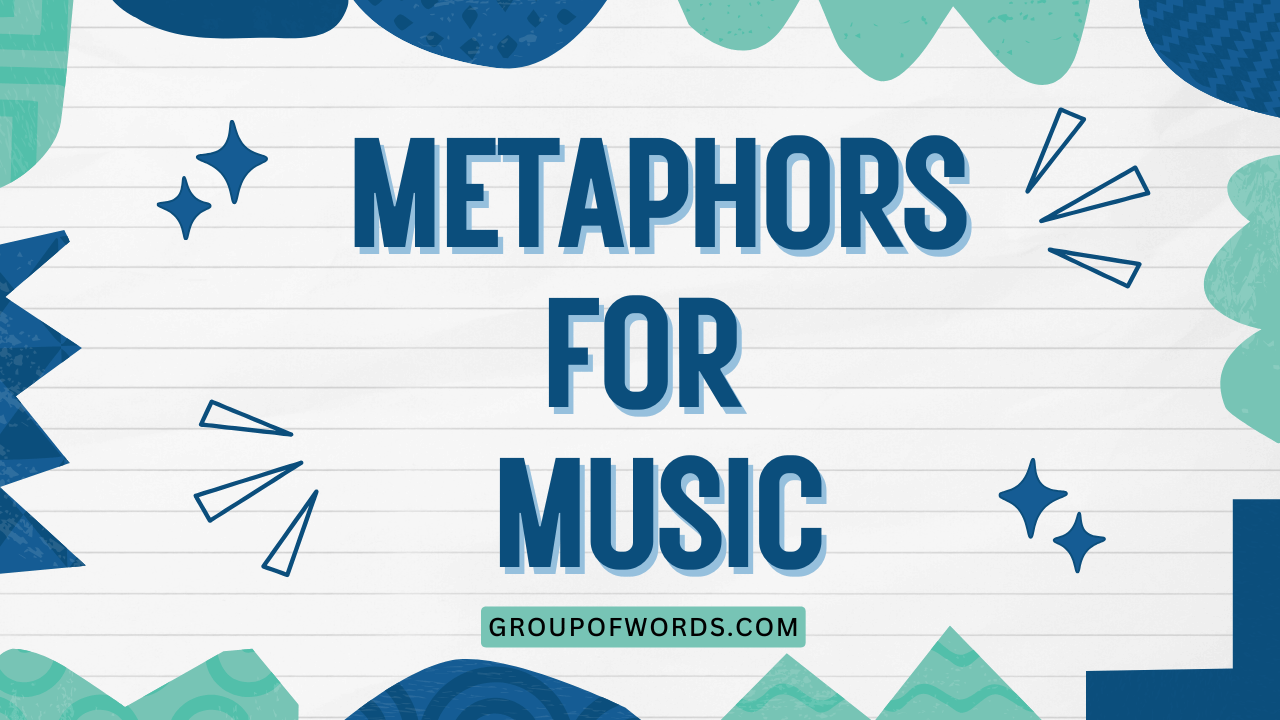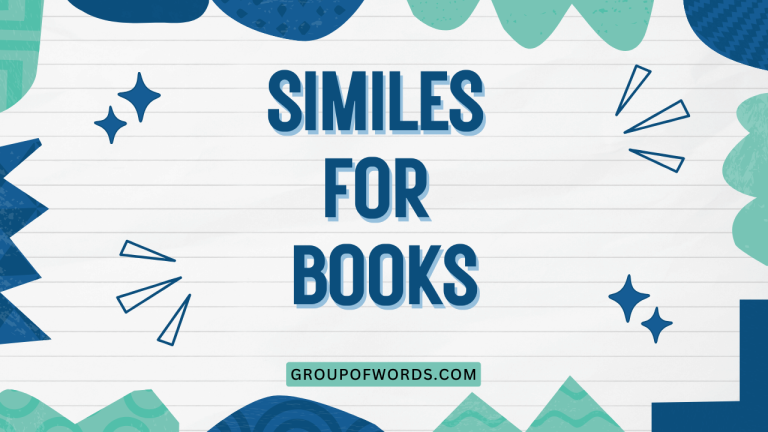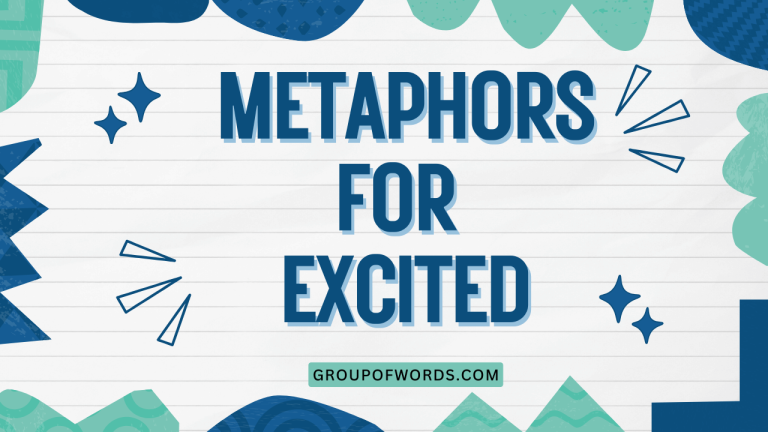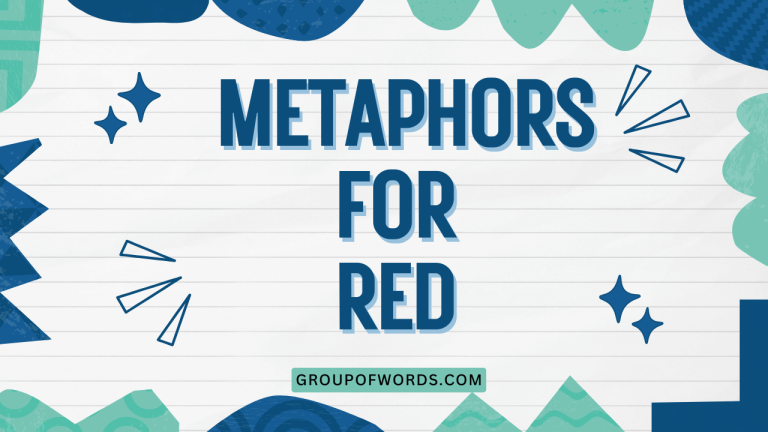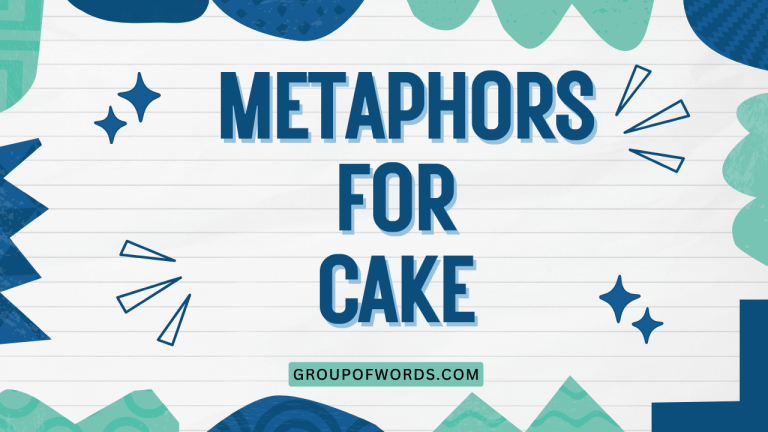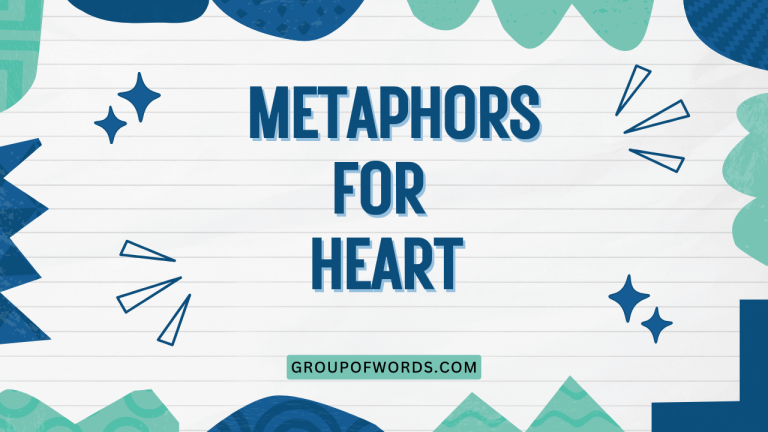Musical Metaphors: Exploring Figurative Language in Music
Music, a universal language, often transcends literal expression. To capture its essence and impact, we frequently turn to metaphors.
Understanding metaphors for music enhances our ability to analyze, appreciate, and describe musical experiences. This article delves into the world of musical metaphors, exploring their various forms, functions, and applications in English grammar.
Whether you’re a music student, a language enthusiast, or simply someone who enjoys exploring the nuances of expression, this guide will provide valuable insights into the art of describing music through figurative language.
This article is designed for English language learners, music enthusiasts, and anyone interested in exploring the intersection of language and music. By the end of this guide, you’ll have a strong understanding of how metaphors are used to describe music and how to use them effectively in your own writing and speech.
Table of Contents
- Definition of Metaphor in Music
- Structural Breakdown of Musical Metaphors
- Types and Categories of Musical Metaphors
- Examples of Musical Metaphors
- Usage Rules for Musical Metaphors
- Common Mistakes When Using Musical Metaphors
- Practice Exercises
- Advanced Topics in Musical Metaphors
- Frequently Asked Questions
- Conclusion
Definition of Metaphor in Music
A metaphor is a figure of speech that directly compares two unlike things without using “like” or “as.” Instead of a literal comparison, a metaphor asserts that one thing *is* another, creating a vivid and often surprising connection. In the context of music, metaphors are used to describe abstract qualities, emotional impacts, or structural elements of music by relating them to something more concrete or familiar.
Metaphors in music function as a bridge between the intangible world of sound and the tangible world of human experience. They allow us to articulate the emotional, physical, and even sensory responses that music evokes.
They help us understand and communicate the essence of a musical piece beyond its technical aspects.
The use of metaphors is crucial because music is often an abstract experience that is difficult to express literally. By employing metaphors, we can convey the nuances of musical expression, connect with others on an emotional level, and deepen our own understanding of the music we hear.
Without metaphors, describing music would be limited to technical terms and objective observations, lacking the richness and depth that figurative language provides.
Structural Breakdown of Musical Metaphors
A musical metaphor typically consists of two main elements: the tenor and the vehicle. The tenor is the subject being described (in this case, music or a specific aspect of it), and the vehicle is the object or concept to which the tenor is compared. The connection between the tenor and vehicle is what gives the metaphor its meaning and impact.
For example, in the metaphor “The music was a warm embrace,” the tenor is the music, and the vehicle is a warm embrace. The metaphor suggests that the music had a comforting and enveloping quality, similar to the feeling of being embraced.
The effectiveness of a metaphor depends on the strength and relevance of the connection between the tenor and the vehicle.
Understanding the structural elements of a metaphor allows us to analyze its effectiveness and appreciate the creativity of the writer or speaker. Breaking down a metaphor into its tenor and vehicle helps us to understand the intended meaning and the specific qualities that are being emphasized.
Consider this structural breakdown:
- Tenor: The musical element being described (e.g., melody, harmony, rhythm, overall piece)
- Vehicle: The object, concept, or experience used for comparison (e.g., color, emotion, physical sensation, landscape)
- Ground: The shared characteristics or associations between the tenor and the vehicle (e.g., warmth, brightness, energy, tranquility)
Types and Categories of Musical Metaphors
Musical metaphors can be categorized based on the type of connection they establish between music and other concepts. Here are some common categories:
Synesthetic Metaphors
Synesthetic metaphors involve describing music using terms associated with other senses, such as sight, taste, smell, or touch. These metaphors create vivid sensory experiences for the reader or listener.
For instance, describing a melody as “bright” (sight) or a harmony as “smooth” (touch) are examples of synesthetic metaphors. These metaphors appeal to multiple senses simultaneously, creating a more immersive and memorable experience.
Synesthetic metaphors are particularly effective in conveying the emotional and aesthetic qualities of music that are difficult to describe using purely technical terms. They allow us to express how music makes us feel in a visceral and immediate way.
Emotional Metaphors
Emotional metaphors describe music in terms of feelings and emotions. These metaphors directly connect the music to the listener’s emotional state.
Examples include describing a song as “heartbreaking,” “joyful,” or “melancholy.” These metaphors convey the emotional impact of the music and help listeners understand the intended emotional message of the composer or performer. The emotions evoked by music are often subjective, but emotional metaphors provide a common language for discussing these feelings.
Emotional metaphors can also be used to describe the emotional journey of a piece of music, such as “The music begins with sadness but gradually transforms into hope.”
Physical Metaphors
Physical metaphors describe music in terms of physical sensations or movements. These metaphors create a sense of physicality and energy in the music.
Examples include describing a rhythm as “driving,” a melody as “soaring,” or a bassline as “grounded.” These metaphors evoke a sense of physical movement or stability, helping listeners to visualize the music in a more concrete way.
Physical metaphors can also be used to describe the physical impact of music on the listener, such as “The music made my heart race” or “The sound washed over me.”
Spatial Metaphors
Spatial metaphors use spatial terms to describe the structure or texture of music. These metaphors help listeners visualize the arrangement and relationships between different musical elements.
Examples include describing a harmony as “deep,” a melody as “high,” or a musical texture as “dense” or “sparse.” These metaphors create a sense of space and dimension in the music, helping listeners to understand the relationships between different musical layers.
Spatial metaphors can also be used to describe the overall form of a piece of music, such as “The music builds to a towering climax” or “The piece unfolds like a vast landscape.”
Gustatory Metaphors
Gustatory metaphors describe music using terms related to taste. While less common, these metaphors can be surprisingly effective in conveying the subtle nuances of musical flavor.
Examples include describing a chord as “bitter,” a melody as “sweet,” or a musical texture as “spicy.” These metaphors evoke a sense of taste, helping listeners to appreciate the unique flavor of the music.
Gustatory metaphors are often used to describe music that is particularly complex or unusual, as they can provide a fresh and unexpected perspective on the music’s qualities.
Examples of Musical Metaphors
The following tables provide a variety of examples of musical metaphors, categorized by type.
Table 1 presents a collection of synesthetic metaphors, illustrating how musical qualities can be described using sensory terms from sight, touch, and other senses.
| Category | Metaphor | Explanation |
|---|---|---|
| Sight | The melody was a bright, shimmering cascade. | Describes the melody as visually radiant and flowing. |
| Sight | The harmony was painted in dark, muted tones. | Describes the harmony as visually somber and subdued. |
| Touch | The rhythm was a smooth, caressing pulse. | Describes the rhythm as tactilely gentle and soothing. |
| Touch | The bassline was a rough, grounding force. | Describes the bassline as tactilely coarse and stabilizing. |
| Taste | The chord progression was a bittersweet symphony. | Describes the chord progression as having a complex, flavorful taste. |
| Taste | The melody had a sugary sweetness. | Describes the melody as having a palatable and pleasing taste. |
| Smell | The music had an earthy, organic aroma. | Describes the music as having a natural, grounding scent. |
| Smell | The song carried the scent of nostalgia. | Describes the song as evoking a familiar and comforting scent. |
| Combined Senses | The music was a vibrant tapestry of sound. | Combines visual and auditory senses to describe the music. |
| Combined Senses | The melody tasted like sunshine on a summer day. | Combines taste and visual senses to evoke joy and warmth. |
| Sight | The high notes sparkled like diamonds. | The high notes are visually described as brilliant and precious. |
| Touch | The music had a velvety texture. | Describes the music’s overall quality as smooth and luxurious. |
| Taste | The dissonant chords were like a sour lemon. | The dissonance is compared to the sharp, unpleasant taste of a lemon. |
| Touch | The percussion created a sharp, prickly feeling. | Describes the percussion as having a jarring, uncomfortable tactile quality. |
| Sight | The music glowed with an inner light. | Describes the music as visually emanating warmth and radiance. |
| Taste | The song left a lingering, sweet aftertaste. | Describes the song as having a pleasant and memorable taste. |
| Smell | The music smelled of rain and fresh earth. | Describes the music as evoking a natural, cleansing scent. |
| Combined Senses | The music was a feast for the senses. | Encompasses multiple senses to describe the music’s richness and appeal. |
| Sight | The music was a kaleidoscope of colors. | Describes the music as visually vibrant and diverse. |
| Touch | The melody felt like a gentle breeze. | Describes the melody as tactilely light and soothing. |
| Taste | The harmony was a rich, dark chocolate. | Describes the harmony as having a luxurious, indulgent taste. |
| Smell | The music smelled of distant memories. | Describes the music as evocative and nostalgic. |
| Combined Senses | The music was a symphony of sensations. | Highlights the comprehensive sensory experience of the music. |
Table 2 showcases a variety of emotional metaphors, illustrating how music can be described using terms related to feelings, moods, and emotional states.
| Category | Metaphor | Explanation |
|---|---|---|
| Joy | The music was a burst of pure joy. | Describes the music as intensely happy and uplifting. |
| Sadness | The song was a lament for lost love. | Describes the song as expressing deep sorrow and grief. |
| Anger | The music was a furious storm of sound. | Describes the music as intensely angry and chaotic. |
| Peace | The melody was a gentle lullaby of tranquility. | Describes the melody as peaceful and soothing. |
| Hope | The music was a beacon of hope in the darkness. | Describes the music as inspiring hope and optimism. |
| Fear | The harmony created a sense of creeping dread. | Describes the harmony as evoking a feeling of fear and unease. |
| Love | The song was a tender declaration of love. | Describes the song as expressing deep affection and devotion. |
| Nostalgia | The music was a bittersweet memory. | Describes the music as evoking a mix of happiness and sadness related to past experiences. |
| Excitement | The rhythm was an exhilarating rush of adrenaline. | Describes the rhythm as intensely exciting and stimulating. |
| Longing | The melody carried a deep sense of longing. | Describes the melody as expressing a strong desire for something unattainable. |
| Contentment | The music exuded a feeling of quiet contentment. | Describes the music as emanating a sense of peace and satisfaction. |
| Despair | The chords echoed with profound despair. | Describes the chords as resonating with intense hopelessness. |
| Serenity | The song was a serene oasis in a chaotic world. | Describes the song as providing a sense of calm and peace. |
| Anxiety | The music built to a crescendo of anxiety. | Describes the music as progressively increasing tension and unease. |
| Grief | The melody was a mournful expression of grief. | Describes the melody as expressing deep sorrow and lamentation. |
| Euphoria | The music lifted me into a state of pure euphoria. | Describes the music as inducing intense happiness and elation. |
| Melancholy | The song was tinged with a touch of melancholy. | Describes the song as having a slight sense of sadness and pensiveness. |
| Wonder | The music filled me with a sense of wonder. | Describes the music as inspiring awe and amazement. |
| Resignation | The chords resonated with a sense of resignation. | Describes the chords as expressing acceptance of an undesirable situation. |
| Hopefulness | The music ended on a note of quiet hopefulness. | Describes the music as concluding with a sense of cautious optimism. |
| Regret | The melody was a haunting reminder of regret. | Describes the melody as evoking feelings of remorse and sorrow. |
| Yearning | The song expressed a deep yearning for connection. | Describes the song as conveying a strong desire for emotional closeness. |
| Relief | The music provided a sense of much-needed relief. | Describes the music as alleviating stress and providing comfort. |
Table 3 presents a collection of physical metaphors, illustrating how music can be described using terms related to physical sensations, movements, and actions.
| Category | Metaphor | Explanation |
|---|---|---|
| Movement | The rhythm was a driving force. | Describes the rhythm as propelling and energetic. |
| Weight | The bassline was a grounded foundation. | Describes the bassline as providing stability and support. |
| Energy | The music pulsed with raw energy. | Describes the music as vibrant and powerful. |
| Flow | The melody flowed like a gentle stream. | Describes the melody as smooth and continuous. |
| Impact | The chords struck me like a thunderbolt. | Describes the chords as having a sudden and powerful impact. |
| Texture | The music had a dense, layered texture. | Describes the music as having a complex and interwoven structure. |
| Height | The melody soared to new heights. | Describes the melody as reaching climactic points. |
| Depth | The harmony plumbed the depths of emotion. | Describes the harmony as exploring profound feelings. |
| Force | The music pushed against the boundaries of convention. | Describes the music as innovative and challenging. |
| Expansion | The song expanded to fill the entire space. | Describes the song as enveloping and immersive. |
| Resistance | The chords clashed with rebellious energy. | Describes the chords as intentionally dissonant and challenging. |
| Pressure | The music built to an unbearable pressure. | Describes the music as creating intense tension. |
| Release | The resolution provided a cathartic release. | Describes the resolution as relieving tension and providing emotional release. |
| Support | The bassline carried the weight of the song. | Describes the bassline as providing fundamental support. |
| Agility | The melody danced nimbly across the scales. | Describes the melody as fluid and graceful. |
| Grip | The rhythm had a firm grip on the listener. | Describes the rhythm as captivating and engaging. |
| Penetration | The sound pierced through the silence. | Describes the sound as sharp and attention-grabbing. |
| Resonance | The chords resonated deeply within my soul. | Describes the chords as evoking profound emotional responses. |
| Levitation | The music lifted me off my feet. | Describes the music as exhilarating and uplifting. |
| Containment | The song held a universe of emotions within it. | Describes the song as encompassing a wide range of feelings. |
| Propulsion | The rhythm launched the song forward. | Describes the rhythm as driving and energetic. |
| Suspension | The chords hung suspended in the air. | Describes the chords as creating a sense of anticipation. |
| Connection | The music bridged the gap between hearts. | Describes the music as fostering emotional connection. |
Usage Rules for Musical Metaphors
When using musical metaphors, it’s important to follow certain guidelines to ensure clarity and effectiveness:
- Relevance: The vehicle should be relevant to the tenor. The connection between the two should be clear and logical.
- Originality: Try to avoid clichés and overused metaphors. Strive for fresh and original comparisons that will capture the reader’s attention.
- Consistency: Maintain consistency in your metaphors. Avoid mixing metaphors that create conflicting images or meanings.
- Clarity: Ensure that your metaphors are easily understood. Avoid obscure or overly complex comparisons that may confuse the reader.
- Context: Consider the context in which you are using the metaphor. The appropriateness of a metaphor may depend on the audience and the purpose of your writing.
A well-chosen metaphor can enhance your writing and bring your descriptions of music to life. However, a poorly chosen metaphor can be confusing or distracting.
Therefore, it’s important to carefully consider your choices and ensure that your metaphors are clear, relevant, and effective.
Common Mistakes When Using Musical Metaphors
Here are some common mistakes to avoid when using musical metaphors:
- Mixed Metaphors: Combining two or more inconsistent metaphors in the same sentence or passage.
- Clichés: Using overused and predictable metaphors that lack originality.
- Inappropriate Metaphors: Choosing metaphors that are not relevant or appropriate to the context.
- Overly Complex Metaphors: Using metaphors that are too abstract or difficult to understand.
- Lack of Clarity: Failing to make the connection between the tenor and the vehicle clear to the reader.
The table below shows examples of incorrect and correct usage of musical metaphors.
| Mistake | Incorrect Example | Correct Example |
|---|---|---|
| Mixed Metaphor | The music was a soaring eagle, but it also drowned in a sea of despair. | The music was a soaring eagle, filled with hope and freedom. |
| Cliché | The music was like a breath of fresh air. | The music was a revitalizing gust of mountain air. |
| Inappropriate Metaphor | The music was a rusty nail. | The music was a sharp, piercing cry. |
| Overly Complex Metaphor | The music was a hyperdimensional fractal of sonic epistemology. | The music was an intricate and complex tapestry of sound. |
| Lack of Clarity | The music was a thing. | The music was a gentle rain, washing away my worries. |
Practice Exercises
Test your understanding of musical metaphors with these exercises.
Exercise 1: Identify the Metaphor
Identify the metaphor in each sentence and explain its meaning.
| Question | Answer |
|---|---|
| 1. The music was a warm blanket on a cold night. | Metaphor: “warm blanket.” Meaning: The music was comforting and soothing. |
| 2. The song was a river of emotions. | Metaphor: “river.” Meaning: The song was flowing and full of intense feelings. |
| 3. The harmony was a deep, resonant ocean. | Metaphor: “ocean.” Meaning: The harmony was profound and all-encompassing. |
| 4. The rhythm was a heartbeat, driving the song forward. | Metaphor: “heartbeat.” Meaning: The rhythm was the core and life force of the song. |
| 5. The melody was a bright, shining star. | Metaphor: “star.” Meaning: The melody was brilliant and captivating. |
| 6. The music was a tapestry woven with threads of joy and sorrow. | Metaphor: “tapestry.” Meaning: The music was a complex composition of contrasting emotions. |
| 7. The song was a key unlocking forgotten memories. | Metaphor: “key.” Meaning: The song evoked and revealed hidden memories. |
| 8. The chords were a storm of sound, overwhelming and powerful. | Metaphor: “storm.” Meaning: The chords were intense and dominating. |
| 9. The music was a whisper in the wind, delicate and fleeting. | Metaphor: “whisper.” Meaning: The music was subtle and transient. |
| 10. The song was a journey through uncharted lands. | Metaphor: “journey.” Meaning: The song was an exploration of new and unknown experiences. |
Exercise 2: Create Your Own Metaphors
Create a musical metaphor for each of the following musical elements:
| Element | Your Metaphor |
|---|---|
| 1. A fast tempo | The tempo was a race car speeding down the track. |
| 2. A dissonant chord | The chord was a jarring clash of metal on metal. |
| 3. A soaring vocal melody | The melody was a bird ascending to the heavens. |
| 4. A heavy bassline | The bassline was a mountain range, solid and imposing. |
| 5. A quiet, ambient piece | The music was a tranquil pond reflecting the sky. |
| 6. A complex, layered composition | The piece was a dense forest, full of hidden pathways and secrets. |
| 7. A simple, repetitive rhythm | The rhythm was the steady ticking of a clock, marking the passage of time. |
| 8. A sudden, unexpected change in dynamics | The change was a sudden gust of wind, scattering leaves in its wake. |
| 9. A long, sustained note | The note was a single star shining brightly in the night sky. |
| 10. A powerful, climactic ending | The ending was a volcanic eruption, releasing pent-up energy. |
Exercise 3: Identify Tenor and Vehicle
Identify the tenor and vehicle in each of the following musical metaphors:
| Metaphor | Tenor | Vehicle |
|---|---|---|
| 1. The music was a river, flowing effortlessly. | Music | River |
| 2. The melody was a gentle breeze, caressing my ears. | Melody | Gentle Breeze |
| 3. The chords were a wall of sound, overwhelming the senses. | Chords | Wall |
| 4. The rhythm was a heartbeat, pulsing with life. | Rhythm | Heartbeat |
| 5. The song was a photograph, capturing a moment in time. | Song | Photograph |
| 6. The music was a painting, filled with vibrant colors. | Music | Painting |
| 7. The melody was a bird in flight, soaring freely. | Melody | Bird |
| 8. The chords were a mountain range, solid and imposing. | Chords | Mountain Range |
| 9. The rhythm was a dance, full of energy and movement. | Rhythm | Dance |
| 10. The song was a story, unfolding with each verse. | Song | Story |
Advanced Topics in Musical Metaphors
For advanced learners, consider exploring these more complex aspects of musical metaphors:
- Cognitive Metaphor Theory: This theory explores how metaphors shape our understanding of abstract concepts, including music.
- Metaphorical Blending: This concept examines how multiple metaphors can be combined to create complex and nuanced meanings.
- Cross-Modal Metaphors: These metaphors involve transferring qualities from one sensory modality to another, such as describing sound in terms of color or texture.
- Cultural Variations in Musical Metaphors: Different cultures may use different metaphors to describe music, reflecting their unique values and experiences.
By delving into these advanced topics, you can gain a deeper understanding of the role of metaphors in shaping our perception and understanding of music.
Frequently Asked Questions
Here are some frequently asked questions about metaphors for music:
- What is the purpose of using metaphors to describe music?
Metaphors help to convey the abstract and emotional qualities of music in a more concrete and relatable way. They allow us to express the nuances of musical experience that are difficult to describe using literal language.
- How do I choose the right metaphor for a piece of music?
Consider the overall mood, emotion, and structure of the music. Choose a metaphor that accurately reflects these qualities and resonates with your own experience of the music. Think about what the music reminds you of and what feelings it evokes.
- Can I use more than one metaphor to describe the same piece of music?
Yes, you can use multiple metaphors to capture different aspects of the music. However, be careful to avoid mixing metaphors that create conflicting images or meanings. Ensure that your metaphors work together to create a cohesive and meaningful description.
- Are there any metaphors that should be avoided when describing music?
Avoid clichés and overused metaphors that lack originality. Also, avoid metaphors that are irrelevant or inappropriate to the context. Choose metaphors that are clear, relevant, and effective in conveying your intended meaning.
- How can I improve my ability to use musical metaphors?
Practice using metaphors in your own writing and speech. Listen to music actively and pay attention to the metaphors that come to mind. Read examples of well-written descriptions of music and analyze the metaphors that are used. The more you practice, the better you will become at using musical metaphors effectively.
- What is the difference between a metaphor and a simile?
A metaphor directly compares two unlike things by stating that one thing *is* another. A simile, on the other hand, compares two unlike things using “like” or “as.” For example, “The music was a warm embrace” is a metaphor, while “The music was like a warm embrace” is a simile.
- How do cultural backgrounds influence the metaphors used for music?
Cultural backgrounds significantly shape the metaphors used for music. Different cultures have unique values, experiences, and associations that influence how they perceive and describe music. For example, metaphors related to nature may be more prevalent in cultures with close ties to the natural world, while metaphors related to technology may be more common in technologically advanced societies.
- What role do metaphors play in music criticism and analysis?
Metaphors play a crucial role in music criticism and analysis by providing a framework for interpreting and evaluating music. They allow critics and analysts to articulate the emotional, aesthetic, and structural qualities of music in a way that is accessible and engaging to a wider audience. Metaphors can also reveal deeper meanings and insights into the composer’s intentions and the cultural context of the music.
Conclusion
Metaphors are powerful tools for describing and understanding music. By using metaphors, we can transcend the limitations of literal language and express the abstract, emotional, and sensory qualities of music in a more vivid and meaningful way.
Understanding the different types of musical metaphors, following the usage rules, and avoiding common mistakes will help you to become a more effective communicator about music.
Remember to practice using metaphors in your own writing and speech, and to pay attention to the metaphors that others use when describing music. By doing so, you will deepen your appreciation of music and enhance your ability to share your musical experiences with others.
Embrace the power of figurative language and unlock the full potential of musical expression.
